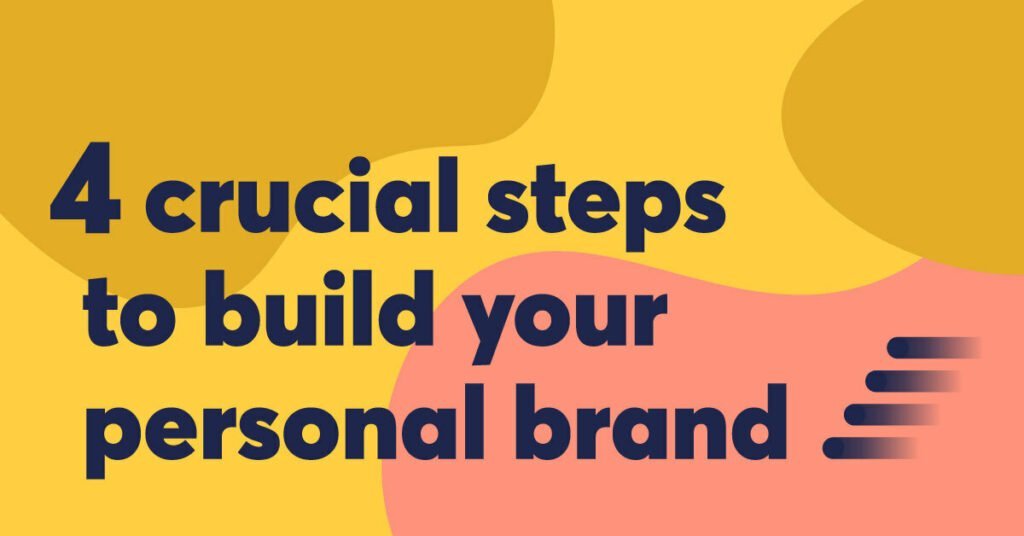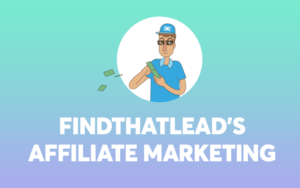Building a personal brand is quite a buzzword these days. People use the phrase to refer to a bunch of practices such as being featured on top publications, redesigning your website, posting pictures and videos of your personal life on Instagram, starting your Youtube channel, etc.
But will doing any of these practices necessarily help you build your personal brand? Could you uplift a personal brand without a clear strategy?
Here are also some tips on how to create brand infographics
You probably know the answers to these questions. What most people are missing when trying to build their personal brand is lack of a wholesome and clear strategy. For them building a personal brand equals dabbling in any of the individual practices mentioned above without a clear understanding of the image they’re building.
In this, rather long, article, you’re going to learn a 4-step personal branding strategy that starts with defining the unique value proposition you want to be known for all the way to uncovering a personal branding tactic you can’t succeed without.
What is a personal brand?
Your personal brand is the combination of all the skills, values, and traits, you’re known for. It’s what comes to people’s minds when they hear your name. If everybody at work considers you a hard-working manager who knows a lot about marketing and who would direct everybody on his team with timely suggestions, that’s your personal brand at work. In the business world, if you’ve created your own logo, infused in people’s minds with your name and ideas, they remember what your brand looks like visually in associations.
Your personal brand is also the reason why people skip your competitors and knock at your door when they’re searching for services and products. And not only that, it’s what makes people recommend you to others. The unique value you’d be proposing to your audience will make them loyal to you. These loyal audiences have the higher “promoters” score (9-10) according to Chatra and are more likely to refer people to you.
4 steps to build your personal brand online
If you’re looking to build your personal brand, chances are you already know what you’re good at. You have a particular set of skills and you’re trying to be known for those skills. So I’m not going to start my 4 steps for building your personal brand with the general “find your passion” tip. Having a personal brand requires a certain level of expertise in your niche so you probably know what your passion is.
However, if you have the level of knowledge and expertise required for building a good personal brand, you need to go to the next level and define what sets you apart from other practitioners in your niche. In fact, knowing how to distinguish yourself from others is so important that one can easily say personal branding is impossible without positioning the value you offer as unique in the minds of your customers.
Step#1. You can’t have a personal brand if. . .
You can’t have a personal brand if you don’t know your unique value proposition clearly. What makes you different in a market full of providers like you? Why should people come to you rather than others when they need something? If you don’t know the answers to these questions, you might want to take some time to define your unique value proposition.
Here are some tips to define your unique value proposition:
1- Define exactly how you’re saving people from the hell they’re in. It’s one thing to have a particular skill, it’s another to know how that skill can save people from the hell they’re in. You might be a good content writer but you might not know how you’d be helping your potential clients with good content.
You need to have a deep thought with yourself and figure out how exactly your clients are going to benefit from your content. It could be increasing organic traffic, building a community of engaged readers, generating leads, selling products, etc. This is the value you should be offering to people, and you’re going to keep repeating it over and over until you’re well known for it.
2- Research your competitors’ strengths and weaknesses. What do your competitors fall short of in your niche? What makes potential clients leave them and look for other candidates? Follow your competitors on social media, check out their websites, study their blog posts and case studies to find out what mistakes they are making and what crucial parts of their jobs they’re missing out.
Sentiment analysis tools could help you find out a lot about what your competitors’ customers complain about the most. Make sure that your audience understands that you avoid these mistakes at any cost and that they can rely on you.
A sentiment analysis tool helps you find out what people complain about your competitors.
3- Brainstorm some reasons why people can’t live without you. What distinguishes your personal brand as unique is the fact that you’re a necessary part of people’s lives. Whereas other practitioners in your niche might be generalists doing some ordinary work, your work is not ordinary.
It is not easily replicable. Brainstorm some aspects of your work that can’t be replicated. For example, as a content marketer, you might have a very good network of influencers and bloggers that could help you with content promotion.
Whereas other content marketers cannot think of a better distribution strategy than sharing posts on social media, you have the ability to drive traffic and build links using the network of influencers and bloggers you know.
Step#2. Find channels to reach your audience
Most people equate being active on social media with building a self brand. It’s true that social media is where almost any kinds of people could be found, but it’s not the only place to find your audience.
When Matthew Woodward started his SEO blog, he would simply hang out on relevant forums where people asked their questions and tried to produce blog posts answering those questions. He had found a valuable channel to reach his audience.
Overtime, by answering people’s questions on his blog and sharing blog posts with them, he could build a good personal brand: a trustworthy SEO expert you could refer to when you have any questions.
Finding channels to reach your audience is a rudimentary step in building your personal brand. You need to be where your audience is and provide value to them. This place could be social media platforms in general, some groups or communities in those platforms, niche websites, niche email lists, podcasts, videos, public events such as seminars and talks, etc.
An underrated strategy for expanding your reach is having a referral program in place. Morning Brew, a company that has grown to more than 2.5 million subscribers to date, takes advantage of an active referral program as its main strategy for growth. Other big companies have always taken advantage of a referral program to expand their reach. Here’s a list of them.
How to build your personal brand on social media
For many people, social media is a good place to start building their self brand. There is a social media platform for almost any kind of person in any area of expertise. Here are some simple steps to build your personal brand on social media:
1- Find out which platform suits you best: You don’t need to be a rockstar on all social media platforms. In fact, it’s not advisable. Obviously, dedicating all your time and energy on one platform is more fruitful than scattering them among different ones.
Study the audience on each platform to see if they are the right fit to reach out to. Hootsuite has a comprehensive social media demographics study you can take advantage of. For example, the report shows that YouTube is the most popular social media platform in the US.
The platform also reaches more 18-to-49-year-olds than any cable network in the US. Considering the popularity and preference of video content among internet users, you might want to have a serious strategy for your personal brand on YouTube.
2-Find out the successful personal brands in your niche: The best way to start in a social media platform is by following successful strategies. Find out the superstars in your niche and study their audience and their content strategy. What’s working for them is probably going to work for you as well. “Who do they reach?” “What topics do they cover the most?” “How often do they post?” are some of the questions you need to answer.
A tool such as Sparktoro can be a great help here. Simply enter the phrase that best describes your niche in the search box to find out what your audience frequently talks about. You will then be provided with a list of top accounts that people interested in your niche follow and engage with.
From there you can click on any of the accounts and get to know the type of audience they reach most along with some other useful information. Audience intelligence is one of the most important aspects of social media marketing.
Sparktoro’s results for the keyword “link building”
3- Consistency is the key on social media: Social media platforms are designed to keep people engaged as long as they can. And their algorithm rewards the publishers that keep people the longest on the platform. Consistency is a key when it comes to keeping your audience engaged on social media.
Publishers who post content more frequently can keep their audience engaged more often and as a result are rewarded more exposure by the platforms’ algorithms. As Tony Restell puts it “marketing on social media is a marathon not a sprint.”
Even setting the social media engagement factor aside, you cannot neglect the effect of consistent content creation on the overall success of your strategy. One of the topics that Seth Godin’s new book, The Practice covers is the necessity of showing up in the digital world.
Even if you don’t feel like doing it, you need to gird your loins and execute the strategy you came up with a while ago. You’re going to feel like you’re out of ideas or even a little bored sometimes, but the real results would only be achieved if you keep up the good work.
Building your brand on social media demands consistency too. Create a social media editorial calendar and schedule your posts in advance using a tool such as Blog2Social to avoid chaos in your calendar.
Step#3- Create content consistently
Building a personal brand is a true creator’s work. The magic happens when you create content consistently. Speaking of Seth Godin and his book, The Practice, we cannot neglect the fact that Seth has been posting on his blog every single day for the last 20 years. His blog has 7,000 live posts.
He is also the author of 20 books so far. He has his own podcast and lots of other projects that would amaze you. The key to his success is obviously what he preaches all the time: consistent content creation.
The question is how could we manage to create content consistently without compromising quality? Here are some suggestions:
1- Expertise comes first
Most people want to build a personal brand because they want to be influencers. They need the exposure and influence of an influencer to make lots of money. Even people interested to start a career in digital marketing are advised to work on their personal brand and become influencers.
They need to post on LinkedIn every day because apparently, it’s the ideal place for all business professionals to hang out and find talents for their businesses. They start the project with enthusiasm.
They even pay a guru who has DMed them on LinkedIn to guide them throughout their project. The problem begins when they realize they run out of ideas quite easily. They don’t have the knowledge and experience to draw upon and provide value through their content.
Consistent content creation demands a good level of expertise. The kind of expertise that would only be achieved through long hours of studying, learning, and practicing. So if you’re aspiring to build a personal brand in a niche and have no experience or knowledge in that niche, you might want to humble your ego first.
Study the basics in that niche. Do some test projects. Offer to work as an intern or an assistant. Building your expertise comes before building your personal brand.
2- A community helps inspire
I have found that the life of a digital marketer could be solitary and at times lonely. I have also found that feeling lonely and left out could cause a state of lethargy where you’re just not in the mood to complete your tasks accordingly.
Add to the nature of our work the effects of the recent pandemic which has normalized working from home and you might have the recipe for mild depression. You might feel uninspired to create content consistently.
The best way to counteract this kind of loneliness is joining communities of like-minded people. It’s always good to know that people have the same struggles as you do and to learn from them. Plus hanging out with people better than you could improve your skills and get you better career opportunities.
You can find online communities in your niche by googling them or searching through Reddit or Slack. Here some of the top communities in digital marketing:
TrafficThinkTank Slack community
OnlineGeniuses Slack community
DPM community membership
Saas Boss Accelerator
WriteMind’s Slack community
3- Offer “how” solutions
One of the distinctions between a novice content producer and an expert one is the fact that the novice content producer can’t go any further than the “should” content whereas the expert has the expertise to offer the “how” content. Any novice content producer could rehash the same old best practices in a general shallow manner, but an expert, who’s been there done that, can guide you through every step you should take and can tell you about the possible outcomes.
You should produce high-quality content” is the kind of advice you hear from a novice content producer. “Here’s the blueprint for creating high-quality research articles . . .” is the kind of content an expert offers you.
To build your personal brand you need to go further than offering the general advice everybody can find by a Google search, and explain the nitty-gritty details and the possible outcomes of the advice you offer. If you’re encouraging people to build links to their content, give them a sneak peek at how you do it yourself from creating link-worthy content to outreaching and building relationships.
Step#4- Build relationships
One of the most underrated tactics for building a personal brand is having strong relationships. Asking to be featured in a popular publication as a stranger might hit the wall. But if you know someone there (or you know someone who knows someone there) chances of being featured there is dramatically enhanced. This is how human beings function as social creatures. They give priority to people they know and trust.
So if you’re serious about building your personal brand, you need to spend a huge amount of your time building relationships. But before you do that, you need to know one thing about building your network.
“Build your network before you need it”
Yes, a lot of people consider networking a quick fix for their business nightmares. If they don’t have the clients for their new copywriting career, they reach out to people asking desperately to introduce them to people in need of copywriters. If they couldn’t get featured in a top publication on their own, they desperately ask previous contributors for an introduction to someone in the editorial team.
Building relationships is a long-term strategy. So if you’re hoping to get something out of your new contact fast, chances are you’re going to ruin that relationship. It’s true that you’re finally going to ask for favors from the people you know but asking desperately without building trust first would not be a success. Being a good communicator and collaborator is one of the top soft skills anyone should master. It’s a long-term strategy.
The best way to approach networking is to do it when you don’t need it. Follow people you’re interested to know on social media, share their content, and mention them in your blog posts, podcasts or videos all the while without expecting anything in return.
Alicja Olko, an outreach specialist at Candybar.co, has been successful at growing her career by building meaningful relationships. This is how she explains the benefits of building good business relationships.
“I’ve built many partnerships in the ecommerce, SaaS, and digital marketing niches that became more than just one-time collabs. I managed to build long-term relationships with companies that help me achieve my goals. Many of my partners introduced me to other marketers, and recently I also started receiving job offers from companies within my broad network.”
She has a few tips for getting the most out of partnerships:
“Be responsive and kind. Don’t make empty promises. Always keep your word. Keep in touch, reach out when you need a favor but always have the best interest of the other partner in mind.”
Send that cold email:
Outreaching via cold emails is one of the most popular ways to build your network. Contrary to what some people might say, email is not dead. In fact, according to a report by Statista the daily number of emails sent and received worldwide is increasing and is going to reach just short of 320 billion in 2021.
Email is especially effective when it comes to building relationships for personal branding because you mostly need to network with people like yourself, business people. And most business people prefer to be contacted via email.
For me personally, cold emailing is the main way to find clients and retain them. One particular email I sent a while ago got me a $3k deal with one of my dream companies. It was originally a guest post offer but as it turned out they were also looking for a freelance content marketer to do a small project for them.
1- Reach out to the right people: the success of your cold email campaign is hugely dependent on whether you’re reaching out to the right people.
The process of finding the right contacts is called “prospecting”. During prospecting you need to take into account some criteria such as the prospect’s location, job title, industry, company size, and the keywords they use in their title. A convenient way to find the right prospects is using a tool such as Findthatlead’s prospector tool.
2- Keep it short: subject lines are basically the first things people see from your cold emails so they have a strong effect on your open rates. Because business people are typically busy, you need to be as succinct as possible and clearly state your proposal. This applies to both your subject line and email body.
3- Trust beats it all: one of the reasons most emails fail is that they fail to build trust. Imagine receiving an email from a total stranger asking for a favor, job, recommendation, introduction etc. Even if their offer is interesting to you, you first want to make sure if they are trustworthy.
You double check their email to make sure it makes sense, you search them online and check out their social media profiles to find out about their previous work experience, you ask for sample work, etc. As someone who sends cold emails, the best way to make sure people can trust you is using trust elements in your email body. This guide explains how you can build trust in your cold emails.
4- follow-up: Oftentimes the emails you send to business people are buried under loads of other emails. You might not receive responses immediately (if they ever get back to you). Instead of taking this personally, you need to follow up on your previous email. Keep your follow-up emails to a few lines and remind them of the benefits they’re going to receive from you.
Timing is also an important aspect of email marketing. Omnisend’s guide on email marketing explains that the best hours to send you emails are 8 a.m, 1 pm, and 4 p.m simply because people check their inboxes more often in these hours.
If you want to learn more about cold email outreach take a look at the Outbound bible we have wrote:
Personal branding in a nutshell:
In a nutshell, personal branding is more than just promoting yourself online. Most people fail to build their personal brand because they’re missing one of these steps in their strategy:
1- Having enough expertise in their niche
2- Finding the right channels to reach their audience
3- Creating content consistently
4- Building meaningful relationships







 BONUS:
BONUS: The Challenge: Join this free course and I guarantee that after 5 days you will have the necessary skills to start generating B2B clients Growth Hacking and Prospecting techniques.
The Challenge: Join this free course and I guarantee that after 5 days you will have the necessary skills to start generating B2B clients Growth Hacking and Prospecting techniques.